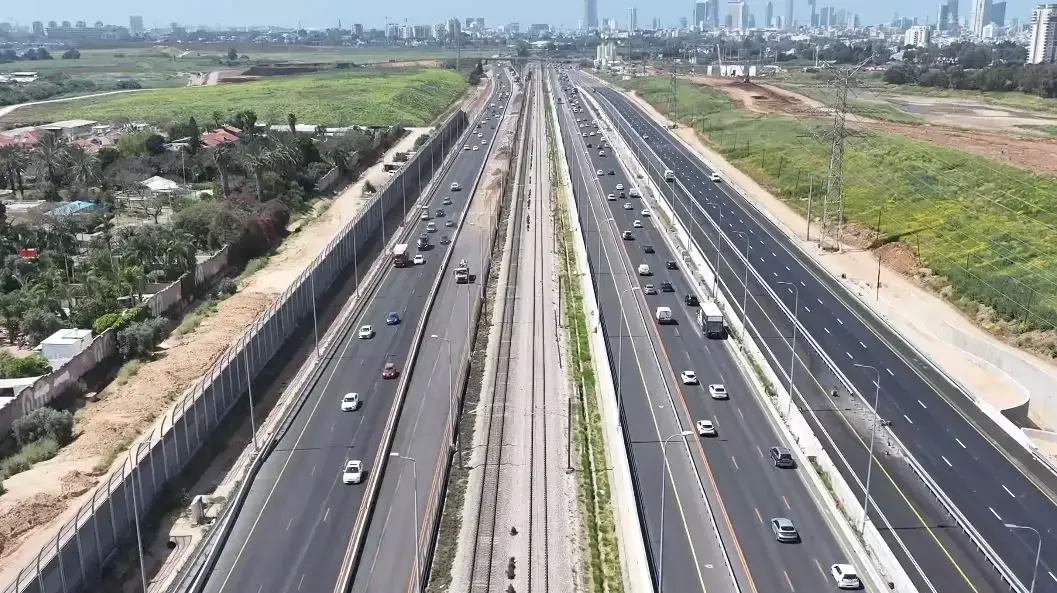Le Figaro Bordeaux
To discover
Follow all the news of the city of Bordeaux
It is impossible to address the issue of mobility in Bordeaux and the region without mentioning the Grand Sud-Ouest Rail Project (GPSO).
While the list of municipalities concerned by a tax to finance this monumental project was unveiled in January, and the mayor of Bordeaux launched an appeal for an alternative to this project, by renovating the existing lines between France and Spain,
Le Figaro
takes stock of what the GPSO will concretely imply for transport in Bordeaux and in the greater south-west.
What is GPSO?
This major rail project aims to create two new high-speed lines: between Toulouse and Bordeaux, then between Bordeaux and Spain, via Dax and Bayonne.
Debated since 2005, this project was the subject of a “
significant consultation and study process
” between 2009 and 2014, specifies SNCF Réseau.
The two lines were declared of public utility in 2016, but it took until 2022 for the implementing decree relating to the creation of the Société du Grand Projet du Sud-Ouest to appear in the Official Journal.
If the works go as planned, Toulouse could be accessible in just one hour by train from Bordeaux from 2032. Currently, it takes two hours to connect the two largest cities crossed by the Garonne.
With this new travel time, the pink city would therefore be only three hours from Paris.
The two GPSO phases currently selected.
DR / SNCF Network
Funding of 14.3 billion euros
This pharaonic project is currently estimated at 14.3 billion euros, including 10.3 billion for the new Bordeaux-Toulouse high-speed line.
This sum would finance the creation of 222 kilometers of new lines as well as major railway developments, south of Bordeaux and north of Toulouse.
The remaining 4 billion will be allocated to the Bordeaux-Dax line, which is not envisaged before 2034 for the moment.
The extension to Spain, planned from 2040, is not scheduled.
40% of this initial cost of the GPSO will be borne by the State, in part through a new tax on private owners, living less than an hour's drive from a station served by the future LGV .
40% will be provided by the Nouvelle-Aquitaine and Occitanie regions, and 20% by the European Union.
Read alsoLGV Bordeaux-Toulouse: discover the 2,340 municipalities subject to a new tax from 2023
The rebellion of mayors against the LGV tax
This GPSO tax, which will be reassessed annually, should bring in 24 million euros in 2023, by deducting people subject to property tax, housing tax on second homes and the property tax for companies.
The amount deducted will be around “
3.40 euros for someone who has 1000 euros of land value
”, estimates the GPSO financing company.
But many elected officials from the municipalities concerned protest against this tax, perceived as "
unbearable
" for territories "
where the new line has no interest in the daily life
" of the inhabitants, explains Jeanne Blanc, mayor of Cercoux (Charente-Maritime ).
“
I challenge to go to Bordeaux in one hour
”, criticizes Michel Masero, mayor of Neuvicq (Charente-Maritime), preferring to give priority to the smallest lines, borrowed by his constituents.
The potential alternatives
Among the opponents of the future LGV, several elected officials and members of civil society highlight the situation of the regional transport network, which is regularly decried.
For Aurélien Bigo, researcher on the energy transition of transport, it is necessary to ensure that "
the difficulties of financing these LGVs do not have repercussions by delays in the financing of the modernization of the existing network, which must remain the priority of investments in the railroad
”.
According to the mayors of Bordeaux, Bayonne and Irun, these renovations would indeed make it possible to increase the speed of trains in the region without creating new lines, which would be "
a pragmatic solution, at the same time less expensive, more sober, faster to achieve and more respectful of territories and ecosystems
".
According to the Public Railway Safety Establishment, the standard running speed of trains is around 200 km/h when there are no level crossings, compared to a speed of 320 km/h on the high-speed network. speed.
But removing crossings to improve the speed of regional trains would imply, according to the president of the region, Alain Rousset, a “
gigantic cost
”.
For the socialist president of the region, this project would mean "
that we stop all trains coming from the south or from Toulouse for at least five years
".
A “
very caricatural
” statement, explains researcher Aurélien Bigo.
For this expert, "
there is no need to stop all the trains in the region for five years to renovate the network
", the work being carried out "
rather at night, when the trains are not running
", without "
interruptions frank of several years on a line
”.
Map from a summary updated in November 2021 by the GPSO, with a comparison of costs between the renovation of existing lines (LE) or the creation of new lines (LE), such as Bordeaux-Toulouse and Bordeaux-Dax.
Screenshot - SNCF Network
A project on a European scale
In the region, the vision of the mayor of Bordeaux, Pierre Hurmic, is far from being shared by everyone.
Two centrist elected officials from New Aquitaine, opposition municipal councilor Fabien Robert and MEP Laurence Farreng, traveled to Brussels in early January to support the development of the LGV to Spain and Toulouse.
For them, "
the extension of the LGV from Bordeaux is in no way opposed to the renovation of the existing line, on the contrary, one is the condition of the other
".
Read alsoPierre Hurmic: “Bordeaux mineral must adapt to climate change”
Regretting that New Aquitaine residents find themselves 10 hours from Madrid by train, the centrists see in the current situation “
a historical and ecological nonsense both for the regional capital but also for the south of the region when economic relations must naturally develop with Spain
".
The European Union estimates that by 2030, "
the length of the high-speed network should be tripled
" in the EU and that "a
dense rail network should be maintained in all Member States
", with the long-term objective term '
a Union high-speed rail network
'.
The consequences on the environment
Whether it concerns new high-speed lines or the renovation of existing lines, the question arises of the impact of these major railway projects on the environment, at a time when climate change and its consequences are are becoming more and more significant.
The GPSO estimates that "
by offering an alternative to travel by plane and car
", future LGVs in the greater south-west "
will save 340,000 tonnes of CO2 equivalent per year
".
The project also specifies “
to limit damage to the environment as well
as possible ”, explaining that “
impacts which could not be avoided or reduced will be compensated
”.
However, the destruction of certain natural areas is not "
compensated
" by plantations in another location.
As such, the Ciron beech forest, directly threatened by the future LGV, could become the scene of a large-scale environmental mobilization, like that currently being carried out in Deux-Sèvres around a project of mega basins water retention.
Enjoying the Natura 2000 label, this exceptional forest, located around a tributary of the Garonne, is at least 40,000 years old.
The Ciron beech forest is one of the oldest forests in Europe.
DR / INRAE - A. Ducousso
If the LGV poses a risk to this jewel of biodiversity, it could however compensate for other aspects of climate change.
“
In the Basque Country, studies show that the retreat of the coastline by 2043 on certain parts of the territory where the current line is located seriously endangers it
”, estimates the centrist Fabien Robert.
For him, “
only the existence of a second high-speed line will allow the development of rail freight and daily trains thanks to the existing line, the use of which will be reinforced
”.
For the researcher Aurélien Bigo, "
the new infrastructures will always have an impact via the artificialization on the environments
", with in particular "
the passage of certain trains which will keep the fauna away
" and "
the cut effect for certain animals, which will no longer be able to circulate easily
”.
As to whether this negative impact on the environment will be offset by the carbon footprint of future train travel, the answer is not so simple.
“
If we want to succeed in reducing road and air traffic, in order to have significant reductions in emissions to achieve our climate objectives –
on which we are enormously behind
– we must ask ourselves the question of modal shift.
Putting high-speed lines cannot only be enough if we continue to invest in the automobile and the air
”, estimates the researcher.
Clearly, as long as the users of the plane and the car do not rush on the TGV, it will not be truly ecological.















